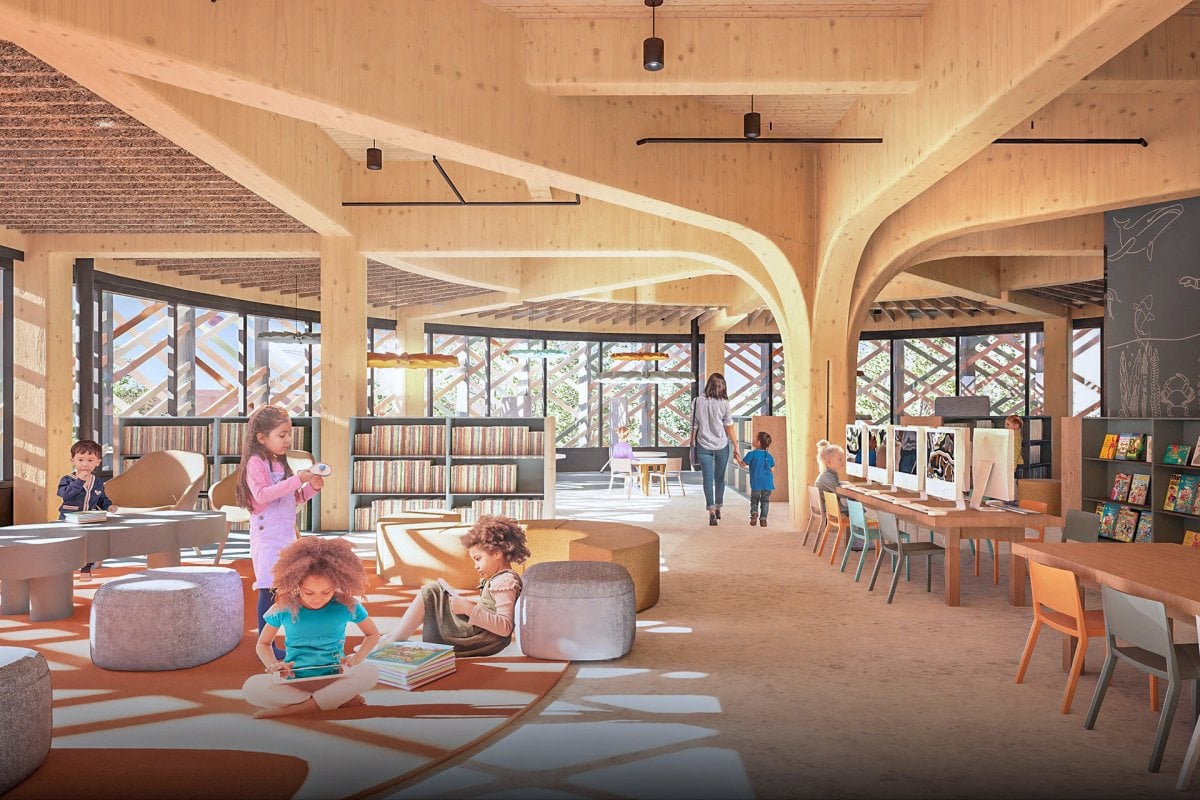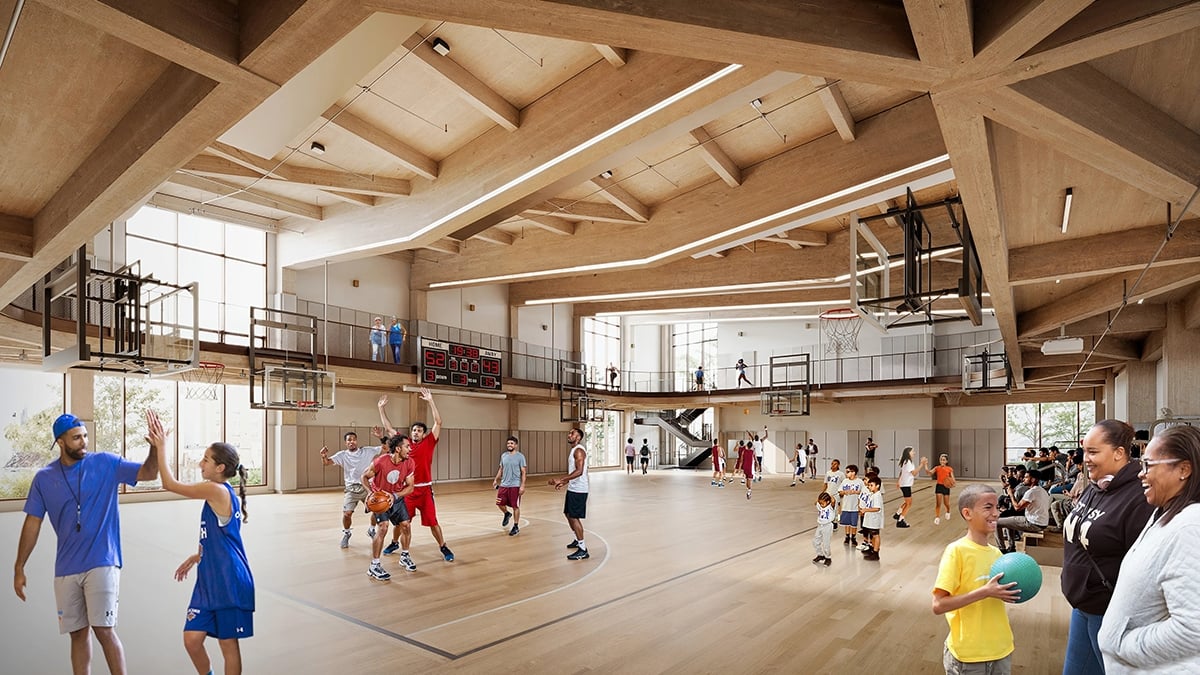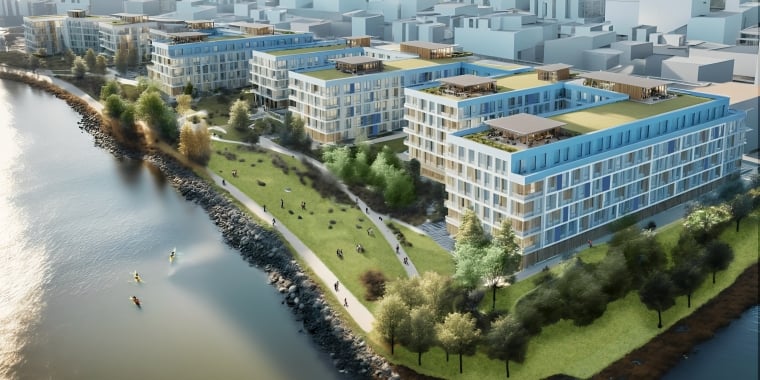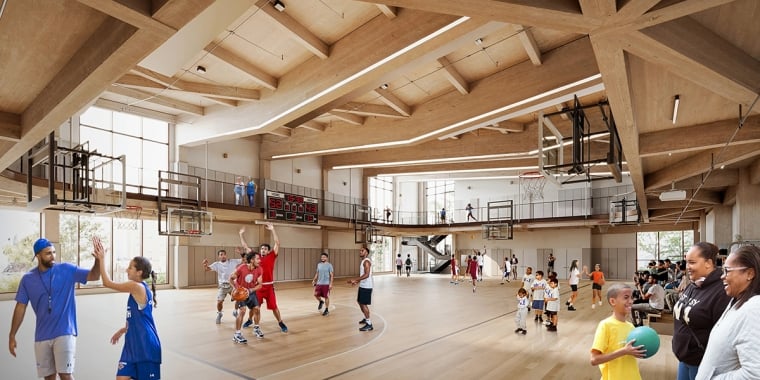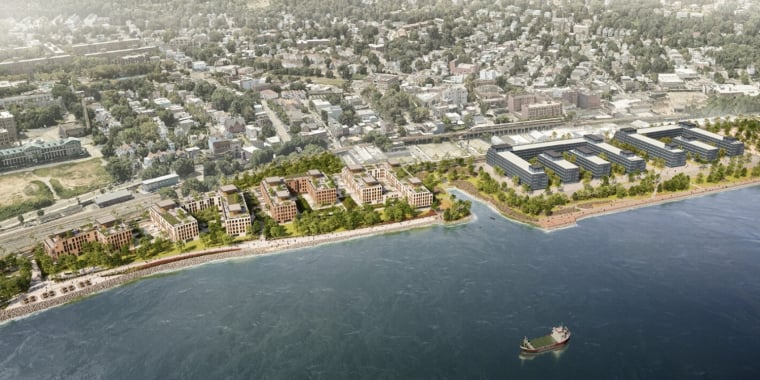Building Material Innovation
The City of New York (the “City”) plays a powerful role in paving the way to decarbonize the built environment and scale the clean construction industry by enabling innovative solutions, facilitating bold policies, and operating pilot programs to overcome implementation challenges in tangible ways.
Milestone
40%
of annual global CO2 emissions come from the built environment, including 13% from materials and construction.
Building on the success of the inaugural cohort, NYCEDC is launching the second round of the Mass Timber Studio—operated by NYCEDC and Newlab in collaboration with the Mayor’s Office for Climate and Environmental Justice with technical assistance provided by WoodWorks, and advisory support from the NYC Department of Buildings (”DOB”), the Fire Department of New York (“FDNY”), and the American Institute of Architects New York.
Building to Net Zero with Mass Timber
In a 2023 PlaNYC report outlining sustainability goals and priorities, the City committed to reducing embodied carbon emissions for new buildings, infrastructure and major retrofits by 50 percent. The built environment is responsible for 40 percent of annual global CO2 emissions, of which building materials and construction are responsible for 13 percent. Unlike operational carbon which may be reduced over time with building retrofits, embodied carbon emissions are locked in place as soon as the building is constructed.
To this end, in 2022, Mayor Adams signed Clean Construction Executive Order 23 which requires the City’s capital project agencies to commit to actions that will lower embodied carbon from municipal construction projects. Expanding the use of mass timber (MT), building materials composed of engineered wood products, is a critical component to achieving the City’s carbon reduction targets.
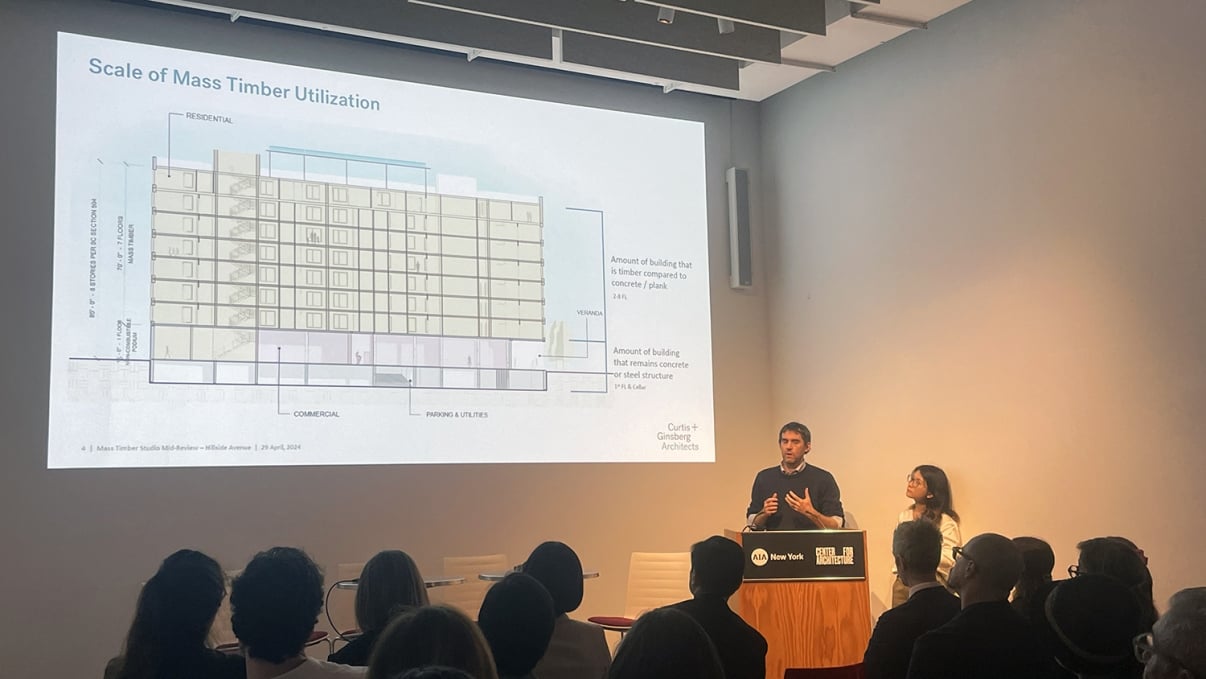
Goals of the NYC Mass Timber Studio
The NYC Mass Timber Studio broadens awareness, identifies new opportunities, and accelerates the use of mass timber practices in New York City, with the following goals:
- Raise public awareness of the environmental and economic benefits and beauty of mass timber construction
- Introduce more practitioners to the details and feasibility of mass timber construction
- Identify development opportunities resulting in new building and infrastructure projects in New York City constructed with mass timber
- Promote regulatory clarity and prudent code reforms that make the use of mass timber construction more feasible while ensuring fire safety
Broader awareness of the benefits and practices of mass timber construction will catalyze more buildings constructed with mass timber materials. New demand can enable harvesters, fabricators, suppliers, and providers to expand their existing businesses, and create new local and regional business and job opportunities.
The Mass Timber Studio’s first cohort of awardees explored the following focus areas: navigating regulatory frameworks, innovative project delivery, technical feasibility, sustainability and resiliency, and community & equity. The projects spanned across all five boroughs and included diverse building typologies and scales – from community centers and recreation centers to multi–family residential and industrial adaptive reuse developments.
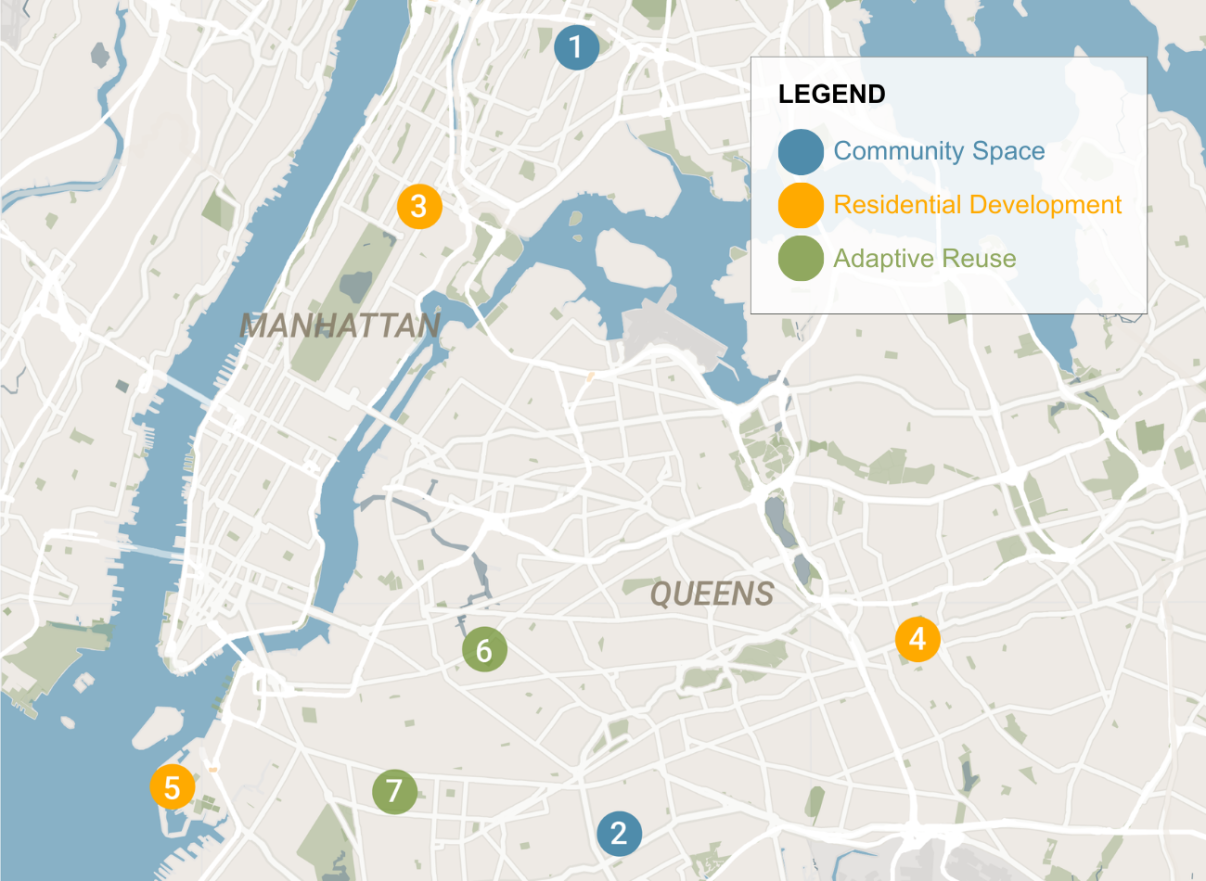
1. Walter Gladwin Recreation Center - Tremont, Bronx
Marvel, TYLin | Silman Structural Solutions, NYC Parks & Recreation, and NYC Department of Design & Construction (NYC DDC)
2. Brooklyn Public Library New Lots - East New York, Brooklyn
Brooklyn Public Library, MASS Design Group, Marble Fairbanks Architects, Envoie Projects, and TYLin | Silman Structural Solutions
3. Mass Timber in Harlem - Harlem, Manhattan
atelierjones, Magna & York, Sage and Coombe, Swinerton, Timberlab, and DCI Engineers
4. Hillside Ave - Jamaica, Queens
Curtis + Ginsberg Architects, MURAL Real Estate Partners, Buro Happold, and Rodney G. Gibble Consulting Engineers
5. Hoek Place - Red Hook, Brooklyn
Urban Terrains Lab, BLDGWorks, TYLin | Silman Structural Solutions, Element5, and Veneklasen Associates
6. 1160 Flushing Avenue - Bushwick, Brooklyn
Totem, BEB Capital, dencityworks | architecture, Evergreen Exchange, and A+I
7. The Grafted Home - Crown Heights, Brooklyn
Algoma and Neighbor
The NYC Mass Timber Studio is operated by NYCEDC and Newlab, in collaboration with the U.S. Forest Service, the Softwood Lumber Board, and the Mayor’s Office of Climate and Environmental Justice, with technical assistance provided by Wood Products Council (WoodWorks), and advisory feedback from DOB, FDNY, and the AIANY.
NYC Mass Timber Studio Projects
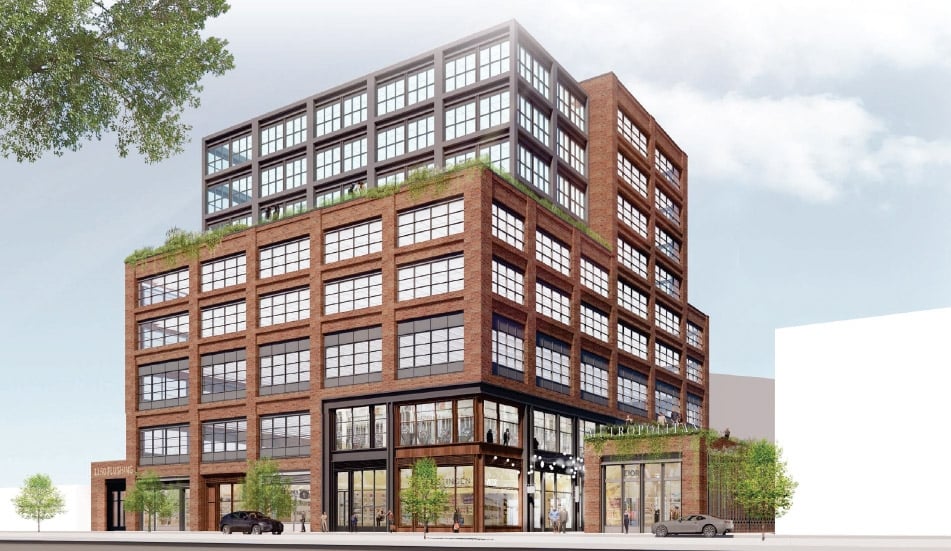
1160 Flushing Avenue – Bushwick, Brooklyn. This mixed-use industrial development will function as a space for companies, entrepreneurs, and artisans and will help to preserve the manufacturing fabric of the local community.
For general inquiries, please contact:

